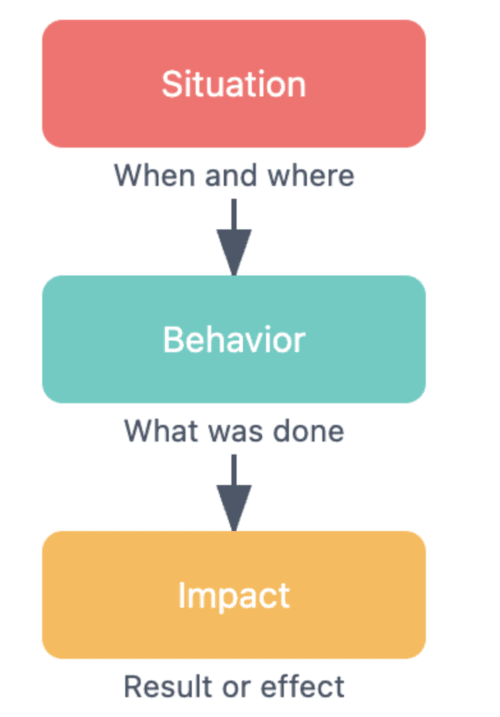Constructive feedback is a cornerstone of effective sales management, providing team members with clear, actionable insights into their performance. As you embark on this journey, you'll learn to employ the SBI (Situation-Behavior-Impact) model to deliver feedback that is both objective and motivating. This approach not only emphasizes behaviors over personal traits but also fosters a culture of growth and continuous improvement.
The SBI model is an invaluable tool for delivering feedback by focusing on specific behaviors rather than personality traits. This framework guides you to provide feedback in a structured manner, beginning with the situation in which the behavior was observed. For example, you might say, "During last week's sales presentation to the executive team...", clearly setting the context. Next, address the behavior by describing the actions observed without judgment. You could note, "You interrupted the client several times during their presentation, even when they were asking for clarification." Finally, highlight the impact of this behavior on the team or project. You might explain, "This caused the client to appear frustrated and may have affected their interest in our proposed solution." By following the SBI model, your feedback becomes clearer and less personal, reducing defensiveness and encouraging open dialogue.

To illustrate, consider the following dialogue between Natalie, a sales manager, and Jake, a sales team member.
- Natalie: Hi Jake, can we talk about yesterday's client presentation?
- Jake: Sure, what's up?
- Natalie: During the presentation, I noticed you interrupted the client multiple times while they were speaking.
- Jake: Oh, I didn't realize I was doing that.
- Natalie: It seemed to frustrate the client, which may have affected their initial interest in our proposal.
- Jake: I see, I'll work on being more patient and allowing them to finish their points next time.
This exchange shows how using the SBI model can lead to a constructive conversation that promotes understanding and encourages improvement without causing defensiveness.
To ensure your feedback is effective, it's essential to incorporate measurable aspects. This means providing clear data that illustrate the issue and set a standard for improvement. For instance, you might say, "In the past month, your follow-up response time has averaged 48 hours, while our team standard is 24 hours. This delay has led to a 15% decrease in client satisfaction scores." Such precise feedback allows team members to see exactly how they can improve and what targets to aim for. Measurable feedback not only clarifies expectations but also enhances accountability and motivation by providing a tangible path for progress.
Feedback becomes truly valuable when it guides the recipient toward positive change. Ensuring your feedback is actionable means offering specific advice and steps for improvement. For example, "To enhance your negotiation skills, I recommend role-playing sessions to practice asserting your position while maintaining client relationships." By providing actionable feedback, you empower team members to take concrete steps towards their professional growth, enhancing their skills and contributing more effectively to the team's success.
Throughout this unit, as you master the art of delivering feedback using the SBI model, you'll prepare for practical application in upcoming role-play sessions. These exercises will enable you to practice and refine your feedback skills in realistic scenarios, ensuring you're well-equipped to lead your team with clarity and purpose.
